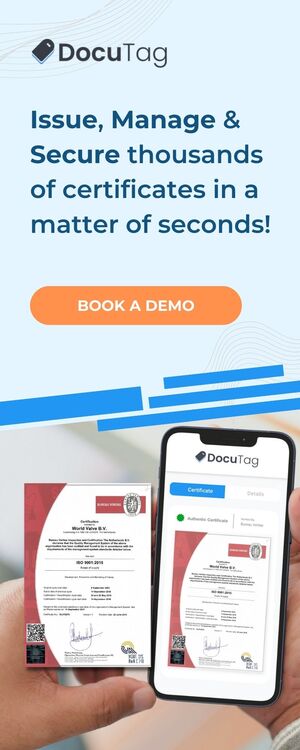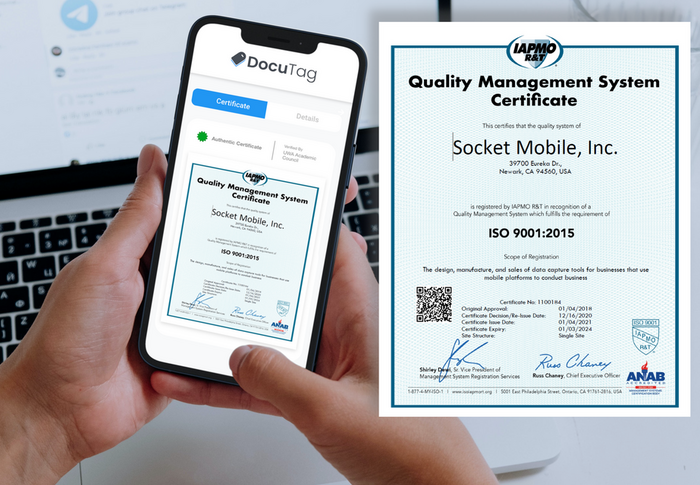How Is Blockchain Technology Changing the Fashion Industry?
The term Blockchain has become synonymous with cryptocurrency, especially Bitcoin. Indeed, a major use-case for blockchain technology is within the finance industry with the idea of virtual payments. However, blockchain can — and will — have an impact on many other sectors. It is already helping change the face of a supply chain, which will impact many businesses in years to come. But the most exciting aspect of blockchain is its ability to protect digital identities and establish authenticity, which will have far-reaching consequences for the luxury and fashion industry.
What is Blockchain?
Blockchain is a decentralized, distributed ledger that stores transactions sequentially. It can be thought of as a database that is shared across a public or private network. The Bitcoin blockchain is an example of a public network. Each user on the network has a copy of this shared database, which makes it impossible for a malicious user to modify or change the contents of this database. This database, or ledger, is append-only; you can only add to it but not modify anything after the fact. Thanks to blockchain’s decentralized nature. It can provide a peer-to-peer network that does not involve any intermediaries or governing authorities, such as a bank or a government.
Blockchain finds its uses in many sectors. Transaction records on a blockchain can be used to identify the owner of a valuable item. Transfer of ownership happens through a new transaction, and we can use this fact to build a chain of ownership or authenticity. This data can not be changed or corrupted.
This concept is already being applied to supply chains around the world. Traditional supply chain systems are centralized, non-standardized and data sharing between stakeholders is minimal and cumbersome. A retailer does not know where suppliers are obtaining goods. A supplier does not know where the manufacturer has obtained raw materials from. In many cases, even manufacturers don’t know about the source used by their raw material suppliers. Each party is using a system of their own, and even if they were brought under a single management system, there would be an objection to who gets to control the data. Most importantly, this data can be changed, modified or corrupted by any party involved in the system.
Blockchain overcomes this problem by establishing a chain of transactions. For each virtual or physical good, there will be a complete list of transactions leading all the way up to the origin of an item (and its ingredients). Data cannot be controlled or manipulated by a single party.
Relevance in the Fashion Industry
As with any industry, the fashion industry also has its own set of challenges. One of the biggest such challenges is counterfeit products flooding the market and taking profits away from established brands while reducing the quality of items, thus damaging the brand’s reputation. Another challenge is the shipment tracking and timely delivery of products with the right specifications. Blockchain carries to potential to solve a majority of these problems.
Intellectual property protection
Using blockchain, manufacturers and designers can protect their brands against counterfeiting. For each fashion item, its origin and ownership can be tracked all the way up to its source. Counterfeit product or replicas will not have an authentic chain of records, and can thus be easily rooted out.
These concepts are already starting to be applied in the industry. London designer, Martine Jarlgaard, in 2017 produced the first garments with smart labels that are recorded tracked on a blockchain. Each step in the manufacturing process was recorded, from raw materials to finished product complete with time and location stamps. Similarly, fashion brand Babyghost started integrating NFC chips into their spring/summer 2017 collection. These NFC tags are identifiers on the blockchain, and customers can use an app to find out everything they need to know about a specific product.
This idea will not only prevent the diversion of profits away from legitimate brands due to counterfeit products but will also make sure that customers get exactly the products that they paid for without any counterfeiting, thus ensuring the quality of products and protecting the reputation of the concerned brand.
Origin tracking
Using blockchain along with Internet-of-Things technologies such as RFID, raw materials can be tracked from their source to the production factory all the way up to finished products that are then delivered to retailers through distribution networks. The origin of each item can be tracked, and substandard materials can be rooted out at the source.
It can also be useful for increasing the overall quality of products and efficiency in the manufacturing process. Fashion brands can identify weak links in their operations, such as a supplier providing faulty materials or a production department/facility not adhering to defined quality standards.
Reliable supply chain in the fashion industry
Whether it is the supply of raw materials or shipment to the end consumer, the supply chain industry is still rife with inefficiencies and mismanagement. The use of blockchain, however, will make practices more transparent. Suppliers trying to alter any record will be identified immediately.
Royalty tracking
Blockchain also makes it easy to track royalty payments. Not only can blockchain allow designers to create an unalterable proof of creation, but it can also be used to license designs and trademarks, and any royalty payments and sales originating through the use of these designs can be easily traced.
Final Thoughts
Blockchain-powered supply chains can foreseeably transform the shape of many businesses in the years to come. The reason this technology hasn’t been widely adopted yet is a lack of technical awareness among consumers and businesses alike. Secondly, there are very few established standards that define how a blockchain network should be implemented. The technology is still in its infancy, and it will take a few years at the very least to be standardized and become mainstream.
®“LuxTag”, Trademark registered.



